High-Intensity Focused Ultrasound (HIFU) in Vietnam
Search and Compare the Best Clinics and Doctors at the Lowest Prices for High-Intensity Focused Ultrasound (HIFU) in Vietnam
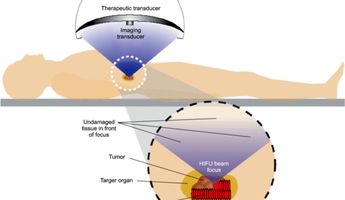
Find the best clinics for High-Intensity Focused Ultrasound (HIFU) in Vietnam
With Medijump you can browse 1 facilities offering High-Intensity Focused Ultrasound (HIFU) procedures in Vietnam. The cheapest price available is $418 in Ho Chi Minh City. And for the cheapest price globally, prices start from $56 in Indonesia.
High-Intensity Focused Ultrasound (HIFU) in Ho Chi Minh City
Price: $ 418
Indonesia offers the best prices Worldwide
Price: $ 56
- Home
- Vietnam
Compare Before & After Photos of _procedure_photos.phpHigh-Intensity Focused Ultrasound (HIFU)
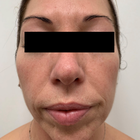
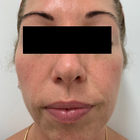
Front view

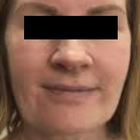
Front view


Front view
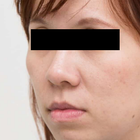
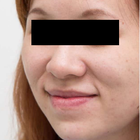
Front view
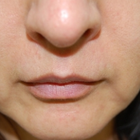
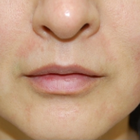
Front view
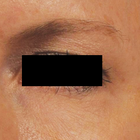
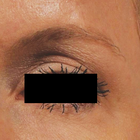
Front view
WHY US?
At Medijump, we're making medical easy. You can search, compare, discuss, and book your medical all in one place. We open the door to the best medical providers worldwide, saving you time and energy along the way, and it's all for FREE, no hidden fees, and no price markups guaranteed. So what are you waiting for?

Free

Best Price

Widest Selection

Risk-Free
What you need to know about High-Intensity Focused Ultrasound (HIFU) in Vietnam
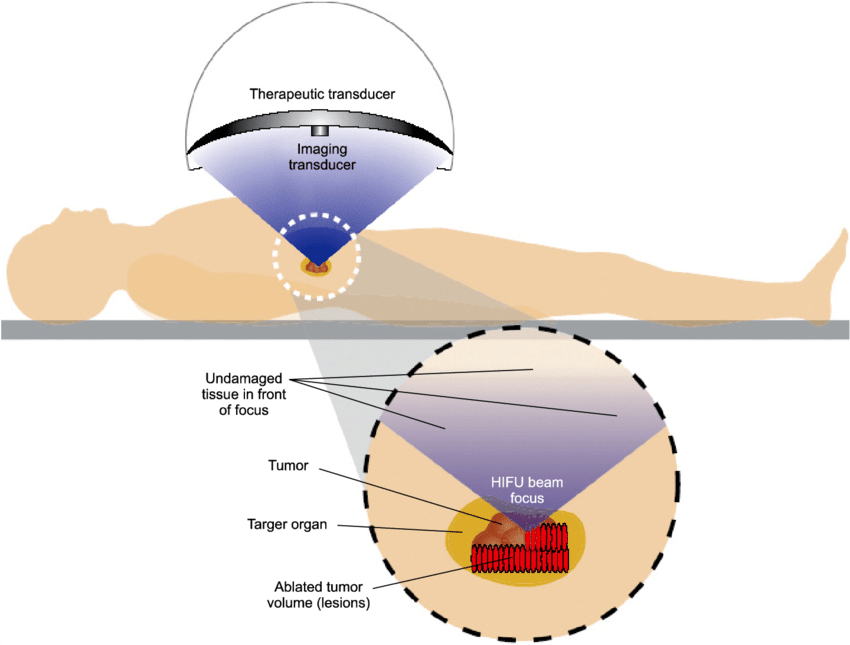
High intensity focussed ultrasound technique (HIFU) also known as focussed ultrasound surgery (FUS), uses non-ionizing ultrasound waves to heat up your body tissues. Temperature can be increased up to 70 to 90°C. These sound waves do not pass through air and bone. It is used for multi-purposes. It works to increase your blood, and lymph flow stimulates cell division and destroys tumor cells. It can also be used to treat a number of disorders including various types of cancer and uterine fibroids. Its use in the treatment of prostate cancer is gaining fame. It can also be used for cosmetic reasons, to reduce wrinkles, aging lines and to lift your loose skin. It is found to be most effective on jawline and cheeks. It should always be performed by the experts because the sonication of the wrong tissue can be dangerous. Also, there might be incomplete destruction of the tumor. Some areas of your body can not be sonicated as they are sensitive to sound waves, this should also be kept in mind while performing HIFU. It can only be used to treat localized cancer and tumors. Cancer which has spread cannot be cured through HIFU.
As HIFU is involved in the treatment of a number of diseases, before going through it, you may suffer from those diseases. These disorders include ovarian fibroids, different types of cancers, breast tumors, Parkinsonism, and a number of other neurological disabilities. You might have loose skin of face, neck, and chest. Vaginal laxity is also a problem. After HIFU, your tumors are destroyed, cancer cells are killed and diseases are cured. Your loose skin looks tightened and strengthened. Wrinkles and aging lines are gone. Vaginal and skin laxity are removed. You look younger than your actual age.
What does a High-Intensity Focused Ultrasound (HIFU) Procedure Involve?
The procedure begins with cleaning the area to be sonicated with alcohol swabs so that there are no germs and bacteria. In the next step, a gel is applied to your skin. Magnetic resonance imaging (MRI) or ultrasound is used to focus the exact tissue, organ or tumor that needs to be treated. The individual is sedated to avoid discomfort and pain during the procedure. After this, the procedure differs according to the purpose of HIFU. In general, an acoustic lens is used to focus sound waves on the targeted organ. The transducer device is used to emit sound waves. The sound waves propagate through the various layers of skin to reach the tumor to be destructed. When sound waves reach the tumor, heat is produced there increasing the temperature up to 90°C in 20 seconds only. This heat starts destroying the cancer cells there.
How Long Should I Stay in Vietnam for a High-Intensity Focused Ultrasound (HIFU) Procedure?
It is a 1 to 4 hours procedure. It depends upon the purpose for which HIFU is being performed. Generally, it is an outpatient procedure. You can be discharged from the hospital after the effects of the sedatives subside. You should plan to stay in Vietnam for at least 14 days after your Procedure, this will allow for the initial recovery and follow-up check-ups, etc.
What's the Recovery Time for High-Intensity Focused Ultrasound (HIFU) Procedures in Vietnam?
The recovery time differs and depends upon the purpose for which HIFU is being carried out. You may suffer from pain and discomfort for 3 to 4 days after the procedure. The soreness and swelling will subside in 2 to 3 weeks. It has less recovery time and has less invasive techniques approved by the FDA. The Non-ionizing radiations used in this technique are the least damaging.
What sort of Aftercare is Required for High-Intensity Focused Ultrasound (HIFU) Procedures in Vietnam?
Aftercare differs in accordance with the purpose for which HIFU is done. However, the following points should be kept in mind to look after yourself at home after being discharged:
- Visit your doctor on a regular basis.
- Do not drive home if you are still under the influence of sedatives.
- Eat healthily. Follow a diet plan made by an expert. It can help you recover faster.
- Take your medicines as and when prescribed by the doctor.
- Take a rest and give yourself time to recover.
- In the case of HIFU for cosmetic reasons, avoid contact with sunlight and wear sunscreen while going out.
- Do not rub or massage your skin.
- Look for something wrong. If you find any sign, visit your doctor immediately.
- In case of any discomfort, contact your physician. Do not go for self-medication.
What's the Success Rate of High-Intensity Focused Ultrasound (HIFU) Procedures in Vietnam?
HIFU has been found to be very successful in the treatment of most of the disorders. However, the success rate differs for each purpose. According to a study, the overall success rate for prostate cancer treatment was reported to be 84%. Cancer patients were divided into 3 groups. The high-risk group showed a low success rate. The intermediate group showed a higher success rate reaching 83.4% and the low-risk group showed the highest success rate of 94.2%. It is also found to be very effective and successful in treating skin laxity and uterine fibroids.
Are there Alternatives to High-Intensity Focused Ultrasound (HIFU) Procedures in Vietnam?
In actuality, HIFU itself is a non-surgical alternative to most of the surgeries. However, the following are some useful alternatives to HIFU:
- Dermal fillers: it is an alternative of HIFU for a facelift. Injections containing Botox, Restylane, etc. are given into your skin to make it look lifted and plump. Your skin looks wrinkle-free and you look younger than your age.
- Uterine artery embolization: this is a treatment for uterine fibroids. Arteries supplying the uterus are occluded by injecting an embolic agent into it. This cuts off blood supply to the fibroids causing them to shrink and ultimately die.
- Radical prostatectomy: also known as an open prostatectomy, entire prostate and seminal vesicle along with some lymph nodes in the pelvic area is surgically removed. Nerve damage is avoided to ensure erection and active sexual life afterward.
- Bilateral orchiectomy: in this surgery, both the testicles are surgically removed. This helps in treating prostate cancer.
- Brachytherapy: in this therapy, radioactive substances are directly inserted into the prostate gland. These are called seeds which give off radiations around the area where they were placed.
Whilst the information presented here has been accurately sourced and verified by a medical professional for its accuracy, it is still advised to consult with your doctor before pursuing a medical treatment at one of the listed medical providers
No Time?
Tell us what you're looking for and we'll reachout to the top clinics all at once
Enquire Now

Popular Procedures in Vietnam
Prices Start From $979

Prices Start From $714

Prices Start From $16

Prices Start From $28

Prices Start From $53

Recommended Medical Centers in Vietnam for High-Intensity Focused Ultrasound (HIFU)

- Interpreter services
- Translation service
- Religious facilities
- Medical records transfer
- Medical travel insurance
- Health insurance coordination
- TV in the room
- Safe in the room
- Phone in the room
- Private rooms for patients available

- Interpreter services
- Translation service
- Religious facilities
- Medical records transfer
- Medical travel insurance
- Health insurance coordination
- TV in the room
- Safe in the room
- Phone in the room
- Private rooms for patients available

- Interpreter services
- Translation service
- Religious facilities
- Medical records transfer
- Medical travel insurance
- Health insurance coordination
- TV in the room
- Safe in the room
- Phone in the room
- Private rooms for patients available

- Interpreter services
- Translation service
- Religious facilities
- Medical records transfer
- Medical travel insurance
- Health insurance coordination
- TV in the room
- Safe in the room
- Phone in the room
- Private rooms for patients available

- Interpreter services
- Translation service
- Religious facilities
- Medical records transfer
- Medical travel insurance
- Health insurance coordination
- TV in the room
- Safe in the room
- Phone in the room
- Private rooms for patients available

- Interpreter services
- Translation service
- Religious facilities
- Medical records transfer
- Medical travel insurance
- Health insurance coordination
- TV in the room
- Safe in the room
- Phone in the room
- Private rooms for patients available

- Interpreter services
- Translation service
- Religious facilities
- Medical records transfer
- Medical travel insurance
- Health insurance coordination
- TV in the room
- Safe in the room
- Phone in the room
- Private rooms for patients available

- Interpreter services
- Translation service
- Religious facilities
- Medical records transfer
- Medical travel insurance
- Health insurance coordination
- TV in the room
- Safe in the room
- Phone in the room
- Private rooms for patients available

- Interpreter services
- Translation service
- Religious facilities
- Medical records transfer
- Medical travel insurance
- Health insurance coordination
- TV in the room
- Safe in the room
- Phone in the room
- Private rooms for patients available

- Interpreter services
- Translation service
- Religious facilities
- Medical records transfer
- Medical travel insurance
- Health insurance coordination
- TV in the room
- Safe in the room
- Phone in the room
- Private rooms for patients available
High-Intensity Focused Ultrasound (HIFU) in and around Vietnam
About Vietnam
Situated at the extreme east of the Indochina Peninsula, Vietnam is a country that exhibits profound cultural richness and captivating landscapes. It holds the distinction of being the world's 15th most populous country, housing over 94 million residents scattered across its diverse geographical expanse. Despite grappling with issues like poverty and corruption, Vietnam's impressive economic performance cannot be overlooked. Notably, the country boasts a commendable GDP growth rate and is celebrated as one of the fastest-growing economies globally.
This country is well-known around the globe for its breathtaking natural beauty. It's also recognized for its energetic, larger-than-life cities that are always buzzing with activity. Furthermore, its culture is intricate and assorted, attracting millions who appreciate rich customs and traditions. In 2018, this place was a magnet for tourists, drawing in over 15 million visitors who were eager to immerse themselves in its unique way of life.
Broadly celebrated for its splendid scenic landscapes, there's an undeniable charm this country possesses. The vivacious megacities are a thrilling fusion of noise, colors, and life that leaves an impression on all who stroll through them. The cultural mosaic of this land is complex, and varied, presenting evidence of a fascinating history shared through countless generations. The year 2018 saw floods of tourists - well in excess of 15 million - come to explore, each leaving with their own tale of discovery within its borders.
The rapid development of Vietnam has made it into the next medical tourism hub in Southeast Asia. Now, medical tourists consider the country as their potential medical destination. Many new medical centers have sprung up and welcomed thousands of patients to relax and enjoy their treatment. The country offers a wide range of cost-effective medical treatment, well-trained doctors, and professional equipment. The country focuses on promoting medical tourism to neighboring markets such as Laos and Cambodia.
Popular Parts of Vietnam
- Ho Chi Minh, formerly Saigon, is the most populous city in Vietnam. It is the financial center and home to the largest stock exchange in the country. Tourists coming to the city can enjoy its many tourist spots such as shopping in the Ben Thanh Market, viewing the city from Saigon Skydeck, discovering the city’s history from The War Remnants Museum, or learning the culture of Jade Emperor Pagoda. Other than the attractions, the city is also famous for its traditional food, including pho and pork rolls.
- Hanoi is the capital of Vietnam and the country’s major metropolitan and political center. Tourists will find many well-preserved colonial buildings, museums, and pagodas. As one of the most ancient capitals in the world, most tourists will be delighted to explore the city’s historic Old Quarter, spend a beautiful day in Hoan Kiem Lake, or visit the Temple of Literature.
- Hoi An invites tourists to experience a slow-paced, relaxing lifestyle. The city’s Old Town has successfully preserved Japanese merchant houses and Chinese temples. To get a glimpse of the city, many tourists will opt for a bicycle tour. The city also offers a unique farming and fishing experience for its visitors. Off the coast of the city, tourists will be overjoyed to find a diving paradise with hundreds of different coral and fish.
- Nha Trang is a coastal city on the South Central Coast of the country. Tourists usually come to this city for its stunning white sandy beaches and scuba diving. In addition to the beautiful beaches, Nha Trang Bay is considered to be one of the world’s most beautiful bays. The city is also home to the remnants of the Champa Kingdom, gothic-style Catholic churches, and many Buddhist temples.
- Da Nang is located on the coast of the South China Sea, making it the most important port city of Vietnam. The city continues to evolve each year, with modern hotels and restaurants being developed all around it. It is the tourist capital of South Central Vietnam. Tourists visit the city to enjoy its tranquil beaches with crystal clear waters, beautiful ancient pagodas, interesting French colonial buildings, and green national parks.
Weather and Climate in Vietnam
Vietnam, situated uniquely on the map, experiences differing climates in its varied regions. If you travel south, you'll find a tropical monsoon climate. This climate type typically comes with two main seasons - the wet season and the dry season.
Straying north, however, you'll encounter a different story altogether. Here, the climate is categorized as monsoonal but it's accompanied by four clear-cut seasons - spring, summer, autumn, and winter. So, regardless of the time of year, there's a high chance you'll experience a unique slice of Vietnamese weather, depending entirely on which part of the country you've set foot in.
- The south experiences wet and dry season and the wet season lasts from September to December. There is more rainfall between September and November. The dry season starts in January and ends in August and the average annual temperature is around 26 °C. Some cities such as Da Nang are prone to typhoons during the wet season.
- In the north, spring starts in February characterized by some rain and cold temperature. The end of April is the start of summer, with intense sunshine and sometimes even a heatwave. The average temperature during Summer is 27.5 °C but it can feel a lot hotter. Autumn starts in September and ends in November. Autumn has the best weather, with a lot of sunshine and calm wind. From December to January is Winter and it is generally cold with an average temperature of 17 °C which can drop as low as 7 °C.
Getting Around in Vietnam
There are numerous airports in Vietnam that connect the major cities. However, there are three major international airports where international visitors usually arrive at, Ho Chi Minh, Hanoi, and Da Nang. Most international flights will arrive at Tan Son Nhat International Airport which serves domestic and international flights to and from major cities in Asia, Europe, and Australia. In terms of capacity, the biggest airport in the country is the Noi Bai International Airport in Hanoi.
The airport is a hub for both local and global travel. It houses two terminals within its boundaries. Terminal 1 is tasked with the management of domestic flights, servicing those traveling within the country's borders. On the other hand, Terminal 2 oversees international flight operations, connecting this airport to numerous cities across Asia and Europe. Affordable airlines, including the likes of Jetstar Pacific and VietJet Air, schedule flights departing from and arriving at both Tan Son Nhat and Noi Bai airports - a testament to the airport's reach and convenience to travelers with varying budget needs.
Tourists do have a few travel options to get around Vietnam. The country is served by trains running from Ho Chi Minh City to Hanoi and it stops in many of the popular areas such as Da Nang and Nha Trang. Buses are a great option for tourists to get around the country and the buses are privately operated buses called “open tour” buses. There is also a national bus system, but they are generally not as comfortable as the private buses.
Taxis are available in most cities and can be hailed directly from the streets or via a phone call. The fare usually starts at VND 10,000 to VND 12,000. If you need to be quick, try the motorcycle taxis known as Xe Om. You will need to negotiate the price but they can be found in most parts of the cities. Cyclo (similar to trishaw) is also available for short-distance travel within a city. For easier travel, opt for Grab Motorbike, an online hailing app similar to Uber.
Tourist Visas in Vietnam
- Citizens of 24 countries, including Singapore, Thailand, Russia, and Japan, can enter and stay in Vietnam for up to 90 days without a visa.
- Citizens of 81 countries, including the United States, the European Union, and Canada, can apply for an e-visa. An e-visa is a single-entry visa that allows the holder to stay in Vietnam for up to 30 days.
- Citizens of all other countries need to apply for a visa at a Vietnamese embassy or consulate.
How to apply for an e-visa:
- To apply for an e-visa, you will need to create an account on the Vietnam e-Visa website and complete an online application form. You will also need to upload a digital photo of yourself and a scan of your passport.
- The e-visa fee is USD 25.
- Once your application is approved, you will receive an e-visa by email. The e-visa must be printed out and presented to immigration officials upon arrival in Vietnam.
Additional information:
- All visitors to Vietnam must have a passport valid for at least six months beyond their intended date of departure from Vietnam.
- Visitors who obtain an e-visa must have a valid passport and a digital photo.
- Visitors who apply for a visa at a Vietnamese embassy or consulate may also need to provide additional documentation, such as a proof of onward travel or a letter of invitation.
Additional Information
- Local Currency: The official currency is the Vietnamese Dong and 1 USD converts to VND 24,455.
- Money & Payments: ATMs are widely available throughout the country. Credit and debit cards are accepted in many hotels but most restaurants and shops still only accept cash. Tipping is generally not expected but will be appreciated.
- Local Language: Vietnamese is the local language. English is not widely spoken, but if you are staying in popular tourist areas, there will be people who can speak some English.
- Local Culture and Religion: Most of the population follows the Vietnamese folk religion. Buddhism, Christianity, Hoahaoism, Islam, and Hinduism are also freely practiced.
- Public Holidays: The country celebrates major religious and national holidays such as New Year’s Day, Saigon Liberation Day, and Vietnam Traditional Lunar New Year.
Popular Searches
- Plastic Surgery in Thailand
- Dental Implants in Thailand
- Hair Transplant in Thailand
- Breast Augmentation Thailand
- Gastric Sleeve in Thailand
- Gender Reassignment Surgery in Thailand
- Laser Hair Removal in Bangkok
- Botox in Bangkok
- Dermatology in Bangkok
- Breast Augmentation in Bangkok
- Coolsculpting in Bangkok
- Veneers in Turkey
- Hair Transplant in Turkey
- Rhinoplasty in Turkey
- Stem Cell Therapy in Mexico
- Rhinoplasty in Mexico
- Liposuction in Mexico
- Coolsculpting in Tijuana
- Rhinoplasty in Korea
- Scar Removal in Korea
- Gastric Sleeve in Turkey
- Bone Marrow Transplant in India
- Invisalign in Malaysia
- Plastic Surgery in the Dominican Republic
- Tummy Tuck in the Dominican Republic
- Plastic and Cosmetic Surgery in Poland
- Rhinoplasty in Poland
- Hair Implant in Poland
- Dental Implants in Poland
- IVF in Turkey